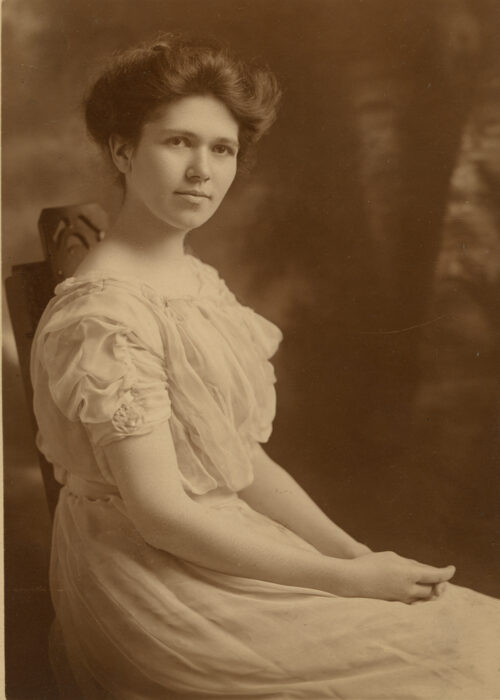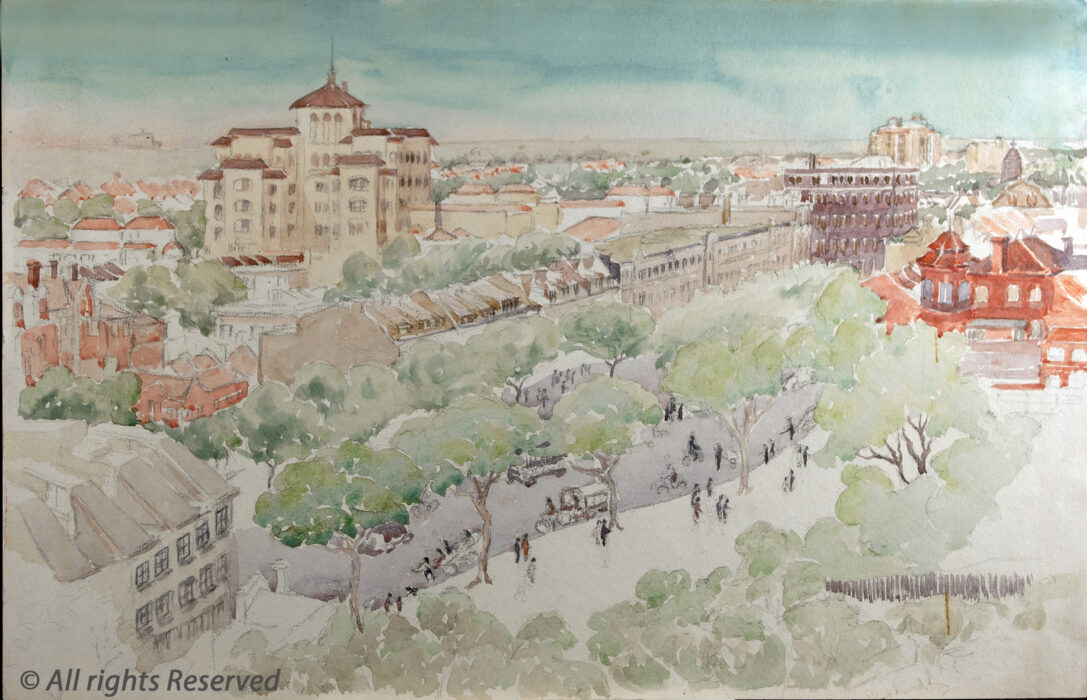

Restoring an old photograph can refresh a memory and bring your ancestors’ stories to life. This torn photo of a 1911 ambulance in Shanghai, is one of many that brings to life the story of my grandparents, Dr. Albert Dunlap and Eva Dunlap. Dr. Dunlap was on call through many armed conflicts in early twentieth century Shanghai. It had been torn in two pieces, which I repaired here at Chandler Designs.

Eva Wyman and Albert Dunlap met in 1907. Eva was the daughter of a Northern Baptist minister. Albert came from an Illinois farming family.
Albert graduated from Harvard Medical school in 1910. He and some classmates had plans to go to Shanghai to start a medical school. Eva joined him in his quest to see another part of the world and share knowledge.
The Dunlaps married in June 1911, and left immediately for China, arriving in late summer 1911. They took up residence in the International Settlement in Shanghai. This was the part of the city where the majority of foreign nationals lived. In 1912 they started their family. They raised six children in China.
For the first few years in China Albert worked in the new Harvard Medical School of Shanghai. Eva was raising children, establishing their home, joining in the classical music scene in Shanghai, and helping Albert with his office organization as needed. Life for the Dunlaps also included ducking gunfire from the factional fighting between various rebellious groups who were trying to unify China under a new form of government to replace the centuries of Empire. It would take decades for the Communists to prevail, and through that time all of the foreign nationals took a pragmatic approach to daily life.
From fall of 1916 to December 1918, the Dunlaps returned to the USA on furlough. They all reconnected with family, and Dr Dunlap got up-to-date medical training.
In Late 1918, they returned to China, and moved to Beijing for Albert to start his next professional phase as the Dean of the Otolaryngology department of Peking Union Medical College (PUMC).
Throughout the 1920s Eva built her connections to art and education groups. Shortly after their return from America, Eva acquired enough art supplies to begin to paint in watercolors and oils. For most of the rest of her life hardly a day went by without Eva painting or sketching a landscape, architecture, portraits, or studying and teaching art.

Common subjects were the parks and various buildings in and around Beijing and Shanghai. Just like photos, original paintings can be damaged over time. Reproducing originals often calls for touch ups before prints are made.
After a decade of work at PUMC 1931 the Dunlaps return to Shanghai to live permanently. Albert established a private practice, and the Dunlaps remained dedicated to their friends and colleagues in China.
The Dunlaps spent the last two decades of their professional lives in Shanghai. At times living through the typical ups and downs of life, other times under the control of an occupying army, a brief time back in the USA, and finally three years under the control of the young Communist government. In 1952 they were finally able to leave the Communist China.
When they returned to the United States in 1953, they moved permanently to Virginia.
Attention to detail—from restoring an old photograph to showcasing original art—can make a story more real and bring you a little closer to your ancestors .
Author’s note:
I am fortunate to have thousands of documents left by my grandparents Albert and Eva Dunlap. Letters, diaries, photographs, and original art by Eva that tell the story of their 43 years in China in the first half of the twentieth century. I am writing the story of their life in China and experiences they lived through during the decades of conflict, wartime occupation and transition of Empire to Communist government. Sometimes this means fixing a torn photograph, sometimes it means reading between the lines of a censored document.
Follow this and other projects by signing up for my newsletter, or contributing on my Patreon Page.
All of my writing and community service projects such as Kitsune, Inc. are supported by purchases in Our Store, restoration, archival printing & framing, and family archive consulting.
Use the Contact Page to tell me about your projects and request an appointment for photo restoration, archival printing & framing.

